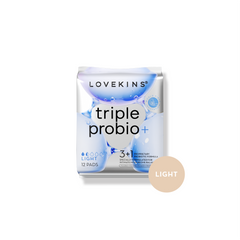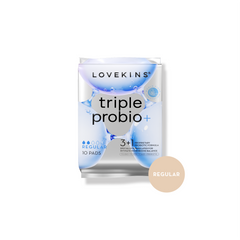Written by midwife Aliza from Bumpnbub
As parents-to-be, you will hear a lot of different information regarding pregnancy and birth, and sometimes it is hard to know what is true and what is false. It is important you are informed with current evidence-based information as you approach this new and exciting chapter.
Let’s discuss a few common myths surrounding pregnancy and labour and shed light on the truth regarding these topics to provide some clarity for you and your partner.
Pregnancy myths:
#1 myth: Morning sickness only happens in the morning
Most mothers will experience some nausea or vomiting in the early stages of pregnancy, but what is known as ‘morning sickness’ certainly does not only occur in the morning. Nausea or vomiting can strike at any time of the day or night due to changes in your hormones. Every mother is different and experiences different symptoms; some women can even experience hyperemesis gravidarum, which is severe sickness throughout pregnancy (generally only ceasing once the baby is born). This often requires hospitalisation for these mothers.
#2 myth: I shouldn’t exercise while I am pregnant
Exercising during pregnancy is safe, and you should be able to maintain similar exercise during pregnancy as you did before falling pregnant. Always check with your healthcare provider for individual advice regarding exercising in pregnancy. A women’s health physiotherapist is also a great health professional to consult with. For a low-risk, uncomplicated pregnancy, exercise is generally encouraged. Light exercise for 30 minutes per day, 5 times per week, can do wonders for you and your baby. As your pregnancy progresses you may find some exercises more challenging, so do what feels right for you and use alternative exercises if needed. Keep in mind to avoid exercises that put you at risk of falling (such as cycling or horse riding), as well as intense exercise where you feel breathless or that increases your temperature.

#3 myth: I should be eating for two during my pregnancy
There is no evidence to show that you need to eat for 2 when you’re pregnant. How much extra you need to eat depends on your weight and height, how active you are and how far into your pregnancy you are. In general, most women should consume around 350 to 450 additional calories per day whilst pregnant, which can be a couple of extra healthy snacks like fruit, a hard-boiled egg or a berry smoothie. Overeating can negatively affect you and your baby, so eating a healthy balanced diet is essential.
#4 myth: Heartburn means my baby will have a lot of hair
One small study shows there may be a connection between heartburn and the thickness of your baby’s hair, but there isn’t enough evidence for this myth to be proven true. Heartburn is quite a common symptom in pregnancy due to baby putting pressure on the stomach, and hormones relaxing your oesophageal sphincter, giving you reflux or heartburn. If you are experiencing heartburn, chat with your healthcare professional regarding ways to relieve it.
#5 myth: There are ways to tell if your baby is a boy or a girl
There are a lot of different myths and old wives tales regarding determining the sex of your baby. These can include how fast your baby’s heart rate is, how active your baby is as well as holding a wedding ring over your tummy and watching which direction it turns. None of these are a reliable way to determine if your baby is a boy or a girl. There are two main ways to find out the sex of your baby. The first way is the non-invasive prenatal test (NIPT), which is a blood test you can do after ten weeks that reveals the sex chromosomes of your baby as well as other important information. The second way is finding out the gender at your 20-week morphology ultrasound.
Labour and birth myths:
#1 myth: My baby’s movements will decrease closer to labour
Your baby should move in their usual pattern right up until you go into labour. Many people think baby’s movements may decrease closer to birth, because they do not have as much room to move around, but this is not correct. Baby’s movements do not decrease just before labour. Having something cold to drink also won’t affect your baby’s movements. If at any time your baby is not moving normally, contact your healthcare provider as soon as possible.

#2 myth: I must give birth on my back
This might be something you have seen in movies or heard about, but you certainly do not have to give birth on your back. You can give birth in whatever position feels comfortable to you at the time. This might mean in a birth pool, on all fours, in the shower or lying on your side. Midwives generally encourage women to give birth in another position besides laying on their backs. Giving birth on your side or on all fours can reduce the chance of severe tears and using gravity helps bring the baby down.
#3 myth: If I have wider hips or a smaller baby I will have an easier birth
Many factors, including the position of your baby, can determine how your labour and birth progresses. The size of your baby and your hips does not necessarily mean you’ll have an easier or harder delivery. Your pelvis is not a solid bone; it is made up of several bones and ligaments that are designed to loosen and move slightly in labour to allow your baby to move through the birth canal. Your baby’s bones in their skull also move to allow them to move through your pelvis. Getting your baby in a good position, preferably their back towards your stomach and chin tucked it, can make a difference to your labour and birth and you can encourage this position by staying mobile, keeping your hips wide and moving positions regularly in labour (squatting and all-fours are great positions).

#4 myth: I will instantly have a bond with my baby at birth
Some mums will feel an instant bond and connection with their baby as soon as they give birth, but sometimes it can take time for that bond to develop after you meet your baby. Not every parent feels that instant spark, and that is okay; reassure yourself that it will grow. It can take time, and you shouldn’t try to rush or feel like you are doing anything wrong. There are ways to help you bond with your baby, including skin to skin, bathing or showering together, holding your baby close to you during feeds (whether it is breastfeeding or bottle-feeding), doing baby massage with Lovekins Baby Massage Oil and doing things you enjoy together as a family.
Every parenting journey really is so unique, from pregnancy through to the postpartum. I hope you enjoyed these myths and they help you feel empowered and confident through your own journey.
**
This does not replace medical advice and is general advice and suggestions only. Always consult your healthcare professional.













